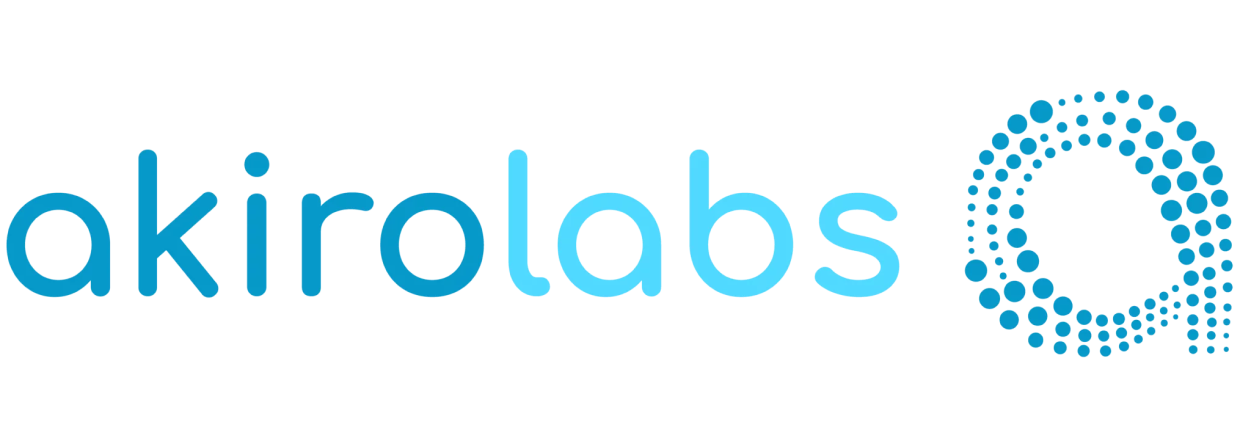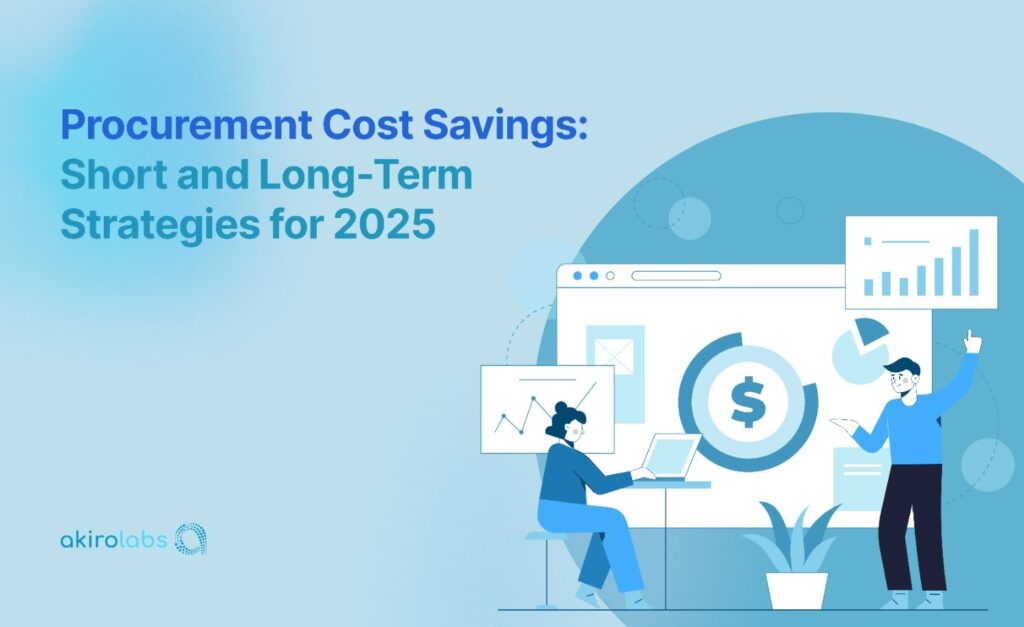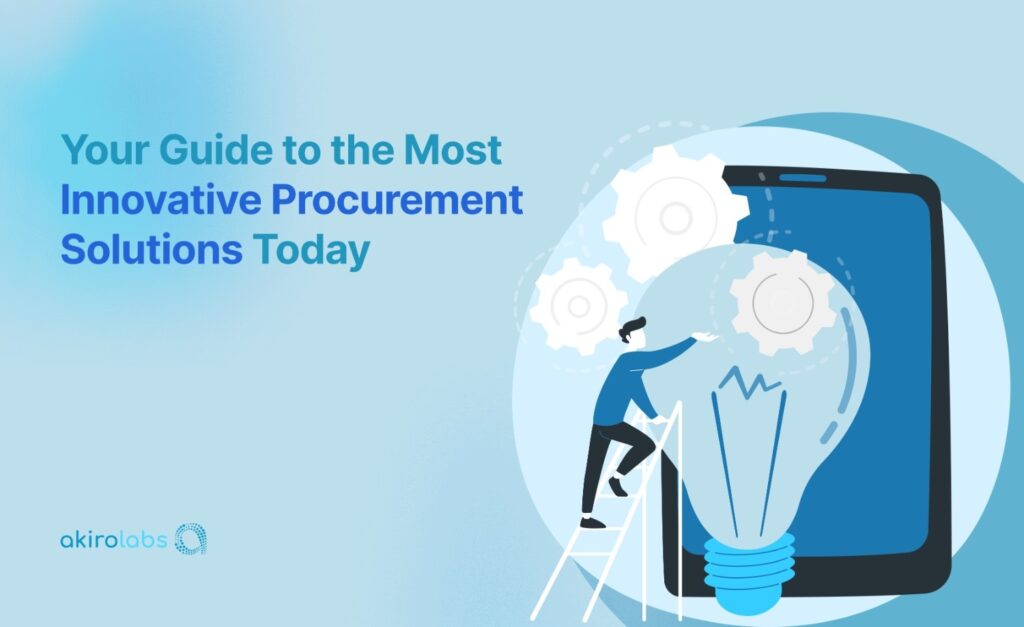Is your business spending more than it should?
Staying profitable isn’t just about increasing revenue but it’s also about smart spending and cost optimization.
A well-planned cost reduction strategy helps you trim unnecessary expenses, improve efficiency, and boost your bottom line without sacrificing quality or productivity.
But cutting costs isn’t about random budget slashes — it’s about strategic decisions that keep operations running smoothly while maximizing savings. From automation to process optimization, this guide breaks down effective techniques and actionable steps to help you reduce costs and improve profitability.
Let’s get started!
Understanding Cost Reduction Strategies

Cost reduction is a proactive and systematic approach to minimizing a business’s expenses without compromising the quality of its products or services. It’s more than just cutting corners; it’s about optimizing processes, streamlining operations, and making smarter purchasing decisions to achieve greater efficiency and profitability.
Implementing well-planned cost-reduction strategies can yield a multitude of benefits across an organization:
- Improve Competitiveness: By lowering operating costs, businesses can offer more competitive pricing, gain market share, and better withstand economic downturns.
- Increase Profitability: Reducing expenses directly contributes to higher profit margins, which can be reinvested in growth initiatives, research and development, or returned to shareholders.
- Enhanced Financial Stability: Lower costs improve cash flow and strengthen a company’s financial position, making it more resilient to unexpected challenges.
- Promote Innovation: When resources are used more efficiently, businesses have more capital available to invest in innovation, new product development, and market expansion.
- Sustainable Growth: Businesses can lay the groundwork for sustainable, long-term growth by continuously optimizing costs and improving efficiency.
12 Proven Effective Cost Reduction Strategy

We’ve handpicked 12 proven techniques and strategic steps to help you implement an effective cost-reduction strategy without compromising efficiency or quality.
1. Strategic Planning and Goal Setting
Laying the groundwork for successful cost reduction begins with strategic planning and clearly defined goals.
Define Clear Cost Reduction Goals
- Establish specific, measurable, achievable, relevant, and time-bound (SMART) goals for cost reduction. These goals should align with the overall strategic objectives of the organization.
- A strategic cost reduction plan is a framework to guide organizations in reducing operational costs and increasing cost efficiency. It should include a timeline, defined objectives, and measurable targets (KPIs) that enable the organization to track progress and success.
Assess Potential for Cost Reduction Across Departments
- Evaluate all departments to identify areas where costs can be reduced. Focus areas could include reducing operational inefficiencies, decreasing energy costs, or minimizing employee costs.
- Differentiate between “good costs” (capabilities that differentiate the business and drive growth) and “bad costs” (non-essential spending).
Develop a Comprehensive Cost Reduction Program
- Create a detailed plan that outlines the specific projects and actions needed to achieve the cost reduction goals.
- The plan should include defined objectives, projects, and KPIs to ensure the strategy is comprehensive and effective. For example, focus areas could include reducing operational costs, improving HR efficiency, or enhancing IT infrastructure.
2. Expense Evaluation and Management
Effective expense evaluation and management are crucial for pinpointing areas where savings can be achieved.
Gather and Analyze Spending Intelligence
- Collect and analyze data on spending patterns to understand where money is being spent.
- Use this information to identify areas of unnecessary spending or potential savings.
Pinpoint Reduction Opportunities
- Based on the spending analysis, identify specific opportunities to reduce costs. This can involve evaluating processes and practices and implementing new solutions.
- Examples of objectives for reducing operational inefficiency could be decreasing shipping wait time and increasing customer satisfaction.
Consolidate Expense Management
- Centralize expense management processes to improve control and visibility.
- Implement e-procurement software to automate and streamline the purchasing process.
Review and Reduce Subscriptions
- Regularly review all subscriptions and identify any that are no longer needed or that can be consolidated.
- Consider migrating to modern, cloud-based solutions to reduce the burden on IT teams and improve data security.
3. Supplier and Contract Management
Optimizing relationships with suppliers and proactively managing contracts can unlock significant cost savings.
Renegotiate Vendor Contracts for Better Terms
- Actively negotiate contract renegotiation to adapt to changing circumstances and secure cost-saving benefits. Regularly review supplier contracts to align with current economic conditions and market prices, leading to new negotiations and better terms.
- Analyze spending data to negotiate improved terms with suppliers. Seek discounts or bundled services to reduce costs without disrupting the supply chain.
- Renegotiating volume discounts enables businesses to lower their per-unit costs, enhancing their profit margins.
Consolidate Suppliers to Improve Buying Power
- Consolidating purchases with a smaller number of reliable vendors can lead to better pricing through increased purchase volume. It also simplifies communication, streamlines ordering and invoicing, and improves service levels.
- Consolidate the supplier base to leverage high-volume pricing. Simplify operations, reduce administrative burdens, and leverage purchasing power to secure cost-saving benefits by strategically selecting a smaller pool of reliable suppliers.
- Combining similar acquisitions from various departments or divisions to secure improved terms and minimize duplication of efforts.
Negotiate Favorable Payment Terms with Vendors
- Utilize established supplier relationships for more favorable terms, pricing, and discounts.
- Explore extended payment terms to improve cash flow.
Take Charge of Supplier Contracts Through Regular Reviews
- Create clear, comprehensive supplier contracts. Outline pricing, performance expectations, renewal options, and dispute resolution methods. Regularly review and update contracts to match market changes and company goals.
- If companies fail to review and adjust contracts periodically, they risk being locked into unfavorable agreements, resulting in unnecessary expenses and missed opportunities for cost optimization.
4. Implement e-procurement Software for Streamlined Purchasing
akirolabs is an AI-powered platform designed to elevate procurement from a tactical function to a strategic business partner orchestrating value chains. It transforms procurement into a strategic value driver by combining advanced AI capabilities with modern procurement practices.
akirolabs enhances electronic procurement (e-procurement) by improving decision-making, aligning workflows, and fostering collaboration across teams. The platform helps procurement teams create, execute, and monitor intelligent category strategies.
Let’s look at some of its key features:
- AI-Enhanced Strategic Procurement: Provides AI-powered insights to go beyond traditional e-procurement with strategic innovation and informed decisions.
- Collaborative Workflow: Centralizes procurement, finance, and operations teams in a single workspace for seamless collaboration.
- Data Synthesis and Advanced Insights: Consolidates internal and external data into a single interface, providing a holistic view of procurement performance.
- Strategic Scenario Modeling: Simulates procurement scenarios to analyze impact and align decisions with business priorities.
- ESG Integration: Integrates sustainability into procurement strategies, aligning purchasing decisions with ESG goals.
- Comprehensive Category Analysis: Provides comprehensive category analysis and identifies impactful value levers.
- Addresses Procurement Challenges: Tackles fragmented processes by consolidating strategy creation, execution, and tracking in one place.
5. Inventory and Process Management
Efficient inventory and process management are key to minimizing waste and maximizing productivity.
Invest in Inventory Management to Reduce Waste
- Implement an inventory management system to track inventory levels, predict demand, and prevent overstocking or stockouts.
- Analyze historical data to identify slow-moving or obsolete inventory and take steps to liquidate it.
- Optimize warehouse layout and storage practices to minimize handling and reduce the risk of damage or loss.
- Accurate inventory management can help businesses avoid wasting capital on excess inventory, reduce storage costs, and prevent losses from spoilage or obsolescence.
Inspect and Manage Business Processes for Efficiency
- Implementing effective cost-saving measures can help your business streamline operations and enhance profitability. By focusing on strategies such as optimizing processes and leveraging technology, you can significantly reduce expenses while maintaining high-quality service.
- Optimize business processes to help your business streamline operations and enhance profitability.
Implement Just-in-Time Inventory Practices
- Adopt a just-in-time (JIT) inventory management system to minimize inventory holding costs and reduce the risk of obsolescence.
- JIT involves receiving goods only as they are needed in the production process, reducing the need for large storage facilities and minimizing waste.
- Implementing JIT requires close coordination with suppliers and efficient logistics to ensure timely delivery of materials.
6. Governance and Monitoring
Establishing a solid governance structure and diligently monitoring results ensures that cost-reduction efforts stay on track.
Establish a Structure of Governance for Cost Reduction Efforts
- Create a clear governance framework to define team roles, responsibilities, and accountability. This will ensure that cost reduction initiatives align with broader business objectives and that progress is monitored through checks and balances.
- Governance determines who monitors spending data, identifies cost reduction opportunities, implements workflow changes, and negotiates vendor contracts1.
- A dedicated project management office (PMO) is critical for creating the necessary governance and accountability. The PMO enables the business to focus on execution and provides structure to improve visibility, leadership, and results.
Follow Through on Implemented Strategies
- After designing a cost reduction program, it’s time to involve all business executives, key management personnel, contractors, and employees in creating the action plan. This will ensure a clear demarcation of roles and that everyone remains on top of the details to minimize any lapses.
- Put the program into action by establishing a governance structure and control deadlines.
Regularly Review and Adjust Cost Reduction Measures
- Cost reduction is an ongoing process. Regularly review efforts to ensure they remain effective, and don’t hesitate to adjust the strategy as new opportunities arise.
- Continuously monitor progress and optimize strategies based on the results. Set savings milestones, track them rigorously, and refine the approach based on the results.
7. Adaptation and Optimization
Continuously adapting to market changes and streamlining processes are crucial for sustained cost-effectiveness.
Adjust Strategies to Market Demands
- Regularly monitor market trends and competitor activities to identify potential threats and opportunities.
- Be prepared to adapt cost reduction strategies as market conditions change. For example, a strategy that worked well during a period of economic growth may need to be adjusted during a recession.
- Stay abreast of market trends and customer feedback to ensure that cost-reduction initiatives are aligned with business goals.
Streamline Processes for Maximum Efficiency
- Continuously analyze business processes to identify bottlenecks, redundancies, and inefficiencies.
- Use process mapping techniques to visualize workflows and identify areas for improvement.
- Implement automation and technology solutions to streamline processes and reduce manual effort.
- Adopt best practices from industry leaders to improve efficiency.
8. Combination and Substitution
Creatively combining resources and seeking cost-effective alternatives can unlock additional savings opportunities.
Bundle Goods and Services Where Possible
- Combining goods and services where possible may lower operating costs.
- Look for opportunities to bundle products or services together to reduce costs. This can involve offering package deals to customers or negotiating bundled pricing with suppliers.
- Combining certain goods and services can result in overall cost reduction and savings.
Use Cost-Effective Alternatives Without Compromising Quality
- Actively seek out lower-cost alternatives to existing products, materials, or services. However, be sure to carefully evaluate the quality of the alternatives before making a switch.
- Consider using generic brands or refurbished equipment instead of brand-new items.
- Switching to cost-effective alternatives without compromising quality can result in significant savings.
9. Continuous Improvement
Adopting a continuous improvement mindset is essential for identifying and eliminating organizational waste.
Implement Lean Principles to Eliminate Waste
- Apply Lean methodologies to streamline operations, reduce waste, and improve efficiency across all business processes.
- Focus on eliminating non-value-added activities to optimize resource utilization and enhance productivity.
Encourage Ongoing Process Improvement
- Cultivate a culture of continuous improvement by empowering employees to identify and implement process enhancements.
- Establish feedback mechanisms and recognition programs to foster a mindset of ongoing optimization.
Regularly Benchmark Against Industry Standards
- Compare the organization’s performance against industry benchmarks to identify areas for improvement and competitive advantage.
- Use benchmarking data to set realistic targets and drive continuous improvement efforts.
10. Strategic Implementation
Strategically implementing cost reduction measures requires focusing on core areas and aligning efforts with overall business goals.
Cut Non-Priority Expenses and Focus on Core Areas
- Identify and eliminate non-essential expenses that do not contribute directly to the organization’s strategic objectives.
- Prioritize investments in core areas that drive revenue, enhance customer value, and support long-term growth.
Align Cost Reduction Efforts with Overall Business Goals
- Ensure that cost reduction initiatives are aligned with the organization’s strategic objectives and support its mission and vision.
- Avoid implementing cost-cutting measures that compromise product quality, customer satisfaction, or employee morale.
11. Financial Management
Sound financial management practices, including budgetary control and forecasting, are essential for preventing unnecessary costs.
Utilize Budgetary Control and Variance Analysis for Monitoring
- Implement robust budgetary control processes to monitor spending and ensure adherence to financial targets.
- Use variance analysis to identify deviations from the budget and investigate the root causes of these variances.
Implement Financial Forecasting to Anticipate and Prevent Unnecessary Costs
- Develop accurate financial forecasts to anticipate future expenses and identify potential cost overruns.
- Use forecasting data to make informed decisions about resource allocation, investment priorities, and cost reduction opportunities.
- Regularly update forecasts to reflect changing market conditions and business realities.
12. Meeting and Communication Efficiency
Optimizing meeting practices and communication channels can save significant time and resources.
Reduce Unnecessary Meetings to Save Time and Resources
- Establish clear meeting agendas and stick to them rigorously. This ensures that meetings are focused and productive.
- Consider whether a meeting is truly necessary or if the information can be conveyed through email, a memo, or a quick phone call.
- Implement shorter meeting formats, such as stand-up meetings, to keep discussions concise and action-oriented.
Optimize Communication Channels for Cost-Effectiveness
- Evaluate the various communication channels used within the organization (email, phone, instant messaging, video conferencing, etc.) and choose the most cost-effective option for each type of communication.
- Utilize collaboration tools and project management software to streamline communication and reduce the need for frequent meetings.
- Consolidate communication platforms to reduce costs and complexity.
- Reducing communication costs can contribute to overall financial success.
Conclusion
Finding ways to save money is essential for long-term success in today’s fast-changing business world. This article highlighted key strategies, from planning and negotiating with suppliers to streamlining operations and getting everyone involved.
A key takeaway is the power of using new technology to work smarter, not harder. Digital tools can help you make better decisions, automate tasks, and find new efficiencies.
While embracing new technology might seem challenging, the right solution can make a big difference.
That’s where akirolabs comes in. Their AI-powered platform transforms the way you approach procurement, turning it from a simple task into a strategic advantage.
With akirolabs, you can consolidate your efforts, improve teamwork, and even make more sustainable purchasing choices.
Ready to see how technology can revolutionize your cost-saving efforts?
Schedule a demo with us today and discover how smarter spending can lead to a stronger, more profitable business!






